










Klaviyo is the email marketing platform that helps you drive sales through email. ��


✅ At Audiens, we’re always looking to give you new ways to make the most of your customers, from emailing at the best time, to suggesting the product they’d most like.
So, you’ve got a great product and a loyal customer base. You’re seeing some sales, but there’s that nagging feeling you could always be doing more.


Luckily, there are plenty of strategies that can help you reach potential customers.
We’ve spoken to four amazing Klaviyo Master Partners to bring you an exhaustive list of proven tactics to double your Klaviyo sales.
Let’s get started. ��
Carter Founder, Pepped Conor Whelan Marketing, Paase Adam Pearce CEO, BlendIt might seem counterintuitive to remove customers from your email list, but inactive customers can do more harm than good.
They’re less likely to engage with your emails, which will lower your conversion rates and damage your sender reputation over time. ��
The result? Your future emails are more likely to land in the spam folder. ��
Klaviyo makes it easy to identify inactive customers.
Simply create a segment for users who have not opened or clicked on any emails in the past six months.
Here’s how to make it...
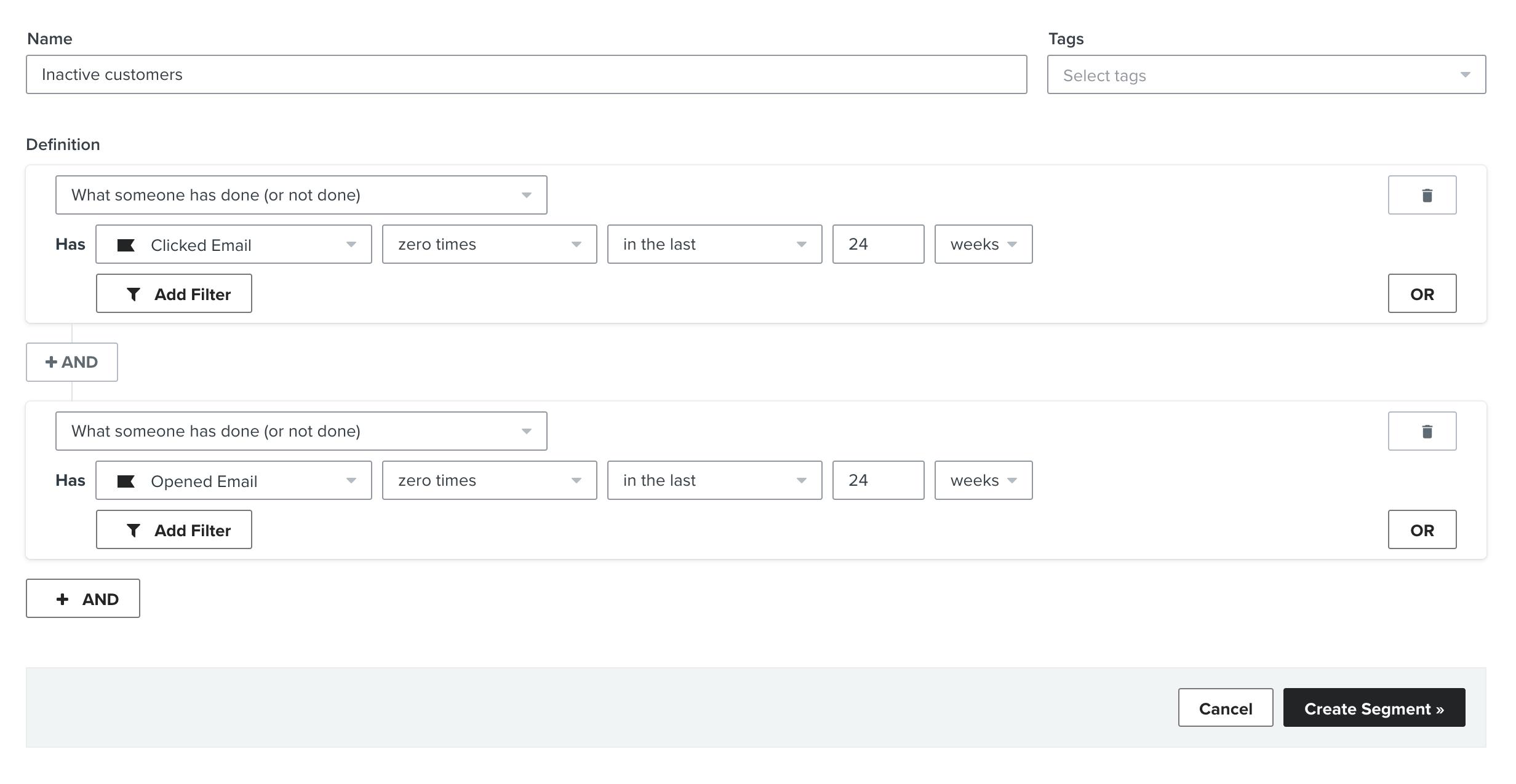
Once you’ve identified your inactive customers, it's time to run a win-back campaign.
This is an email flow specifically designed to re-engage inactive users and bring them back into the fold.
Klaviyo has put together a helpful guide for what to include in your win-back emails.
If you've tried a win-back campaign and a significant portion of your inactive customers still haven't engaged, it may be time to say goodbye. ��
The easiest option is to add the inactive list to your ‘don’t send to’ dropdown when creating a new campaign. However, unless you include this setting as part of your template, you’d need to remember to do this every time. ��
The second option is to add the customers in your inactive list to your suppressed list. ��
This would stop them from receiving any future emails and they won’t be counted against your Klaviyo bill. However, this is not an automated process, so you’d need to suppress this segment manually every so often.
Let’s look at both options...

When
If


Quizzes have been an absolute revelation. ��
They're converting at about 25%, �� plus the ability to personalize welcome flows is incredible.
Adam Pearce CEO, Blend Klaviyo Master Partner
Quizzes give you a treasure trove of zero-party data to improve your email conversion rates. Zero-party data is information that customers provide on asking, whereas first-party data is information you get from user behavior and analytics.
By collecting this through an on-site quiz, you can gain a better understanding of a specific user's interests, preferences, and behaviors.
Imagine you run a Shopify store selling outdoor gear.
You might create a quiz that asks customers about their favorite activities.
Based on their responses, you might segment them into different groups e.g. "hikers," "campers," and "fishers".
You can then enroll these customers into highly-personalized email flows, featuring products and content tailored to their specific interests.
For example, Polysleep use a quiz to capture details ✅ about sleeping habits along with an email address, �� and send those leads a product recommendation. ��

Fortunately, there are numerous apps that let you pass quiz results directly into Klaviyo without any coding, e.g. Octane AI and Convertflow.
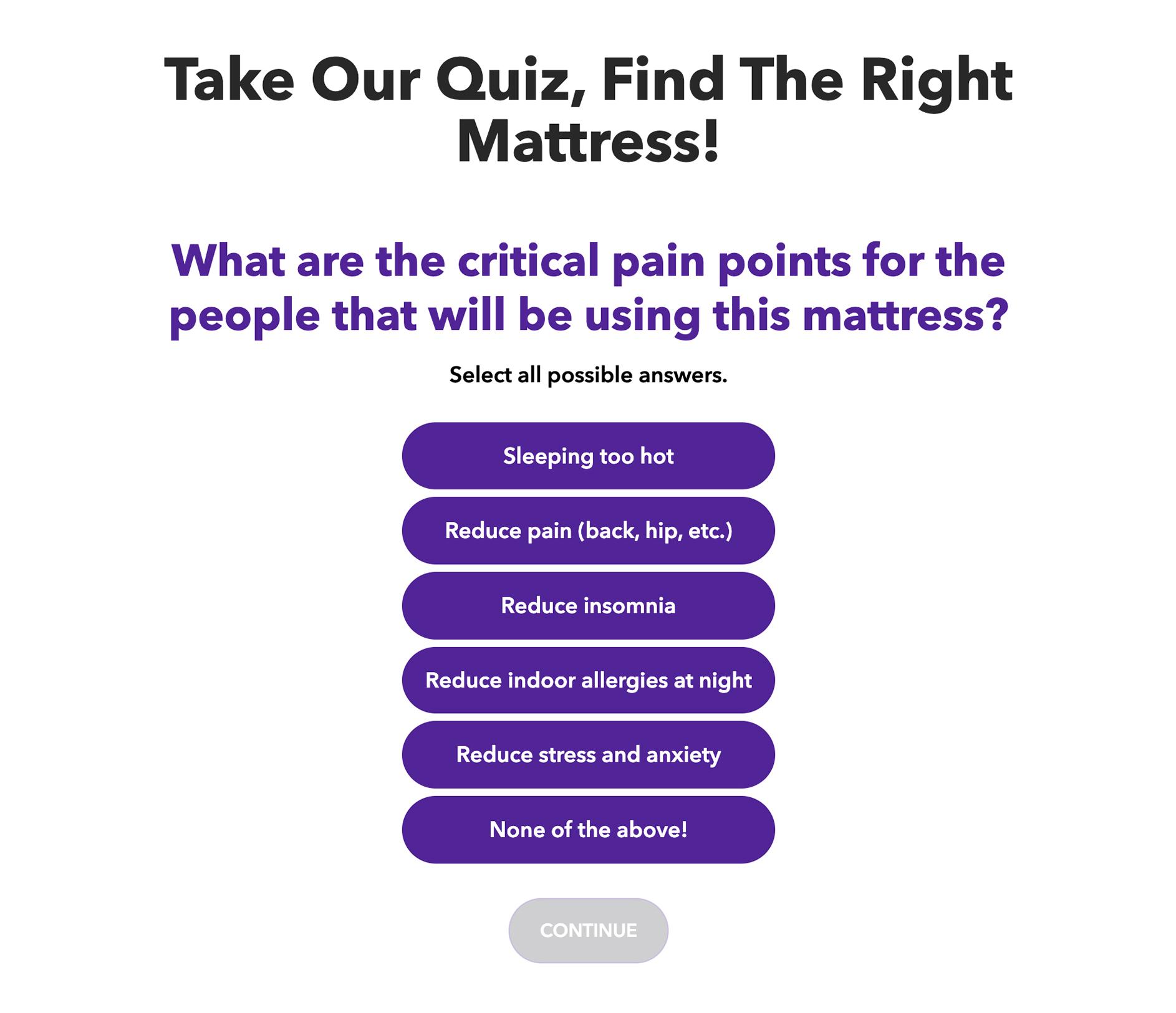
We used Octane AI for our client, Curlsmith, to gather zero-party data about particular hair care needs. ���� Our goal was to create a personalised shopping experience to engage visitors and follow up via email with tailored product recommendations. ��
The quiz generated 100K+ new subscribers in just 7 months and increased email revenue by 10%. ��
 Whelan Marketing, Paase Klaviyo Master Partner
Whelan Marketing, Paase Klaviyo Master Partner
The mistake we see DTC brands making the most is not segmenting their databases enough (or at all!).
Segmentation is the single most important lever that you can pull when it comes to lifecycle marketing. ��
Brands often forget that each of their customers are at different stages of the customer journey which is why a blanket-all approach to communication is ineffective. ����
Georgie Carter Founder, Pepped Klaviyo Master Partner
A well-planned segmentation strategy for your Klaviyo account can deliver huge results.
Here’s proof:
✅ ICONIC London = 130% increase in open rates 1
✅ Laird Superfood = 105% increase in revenue 2
✅ Beyond Yoga = 105% increase in revenue 3
It's incredibly tempting to send the exact same email to all of your customers in hopes of squeezing a few extra orders, but there's three major downsides:
1. It's a short-term fix ⏳
2. Your sales get worse each time you do it ��
3. Your customers HATE it, and eventually unsubscribe ❌
The good news?
Segmenting your email list isn’t as time consuming as you think. Here’s three crucial segments you should build in Klaviyo, along with example campaigns...
1 Source for ICONIC | 2 Source for Laird Superfood | 3 Source for Beyond Yoga

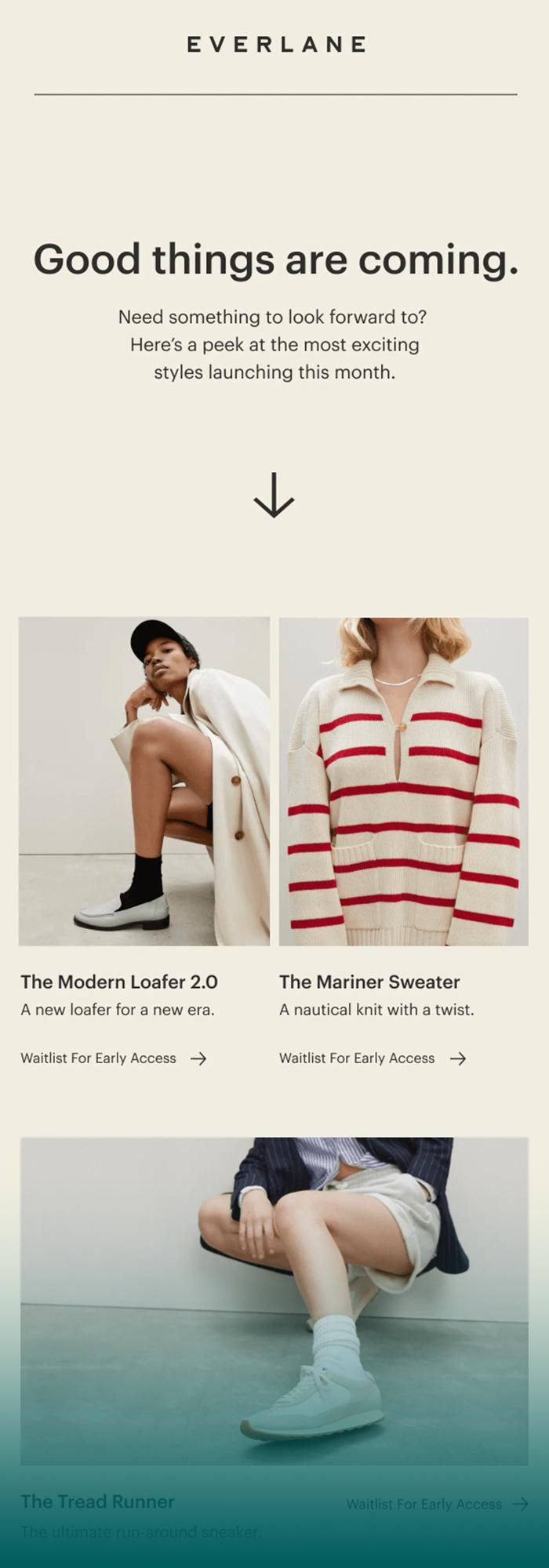

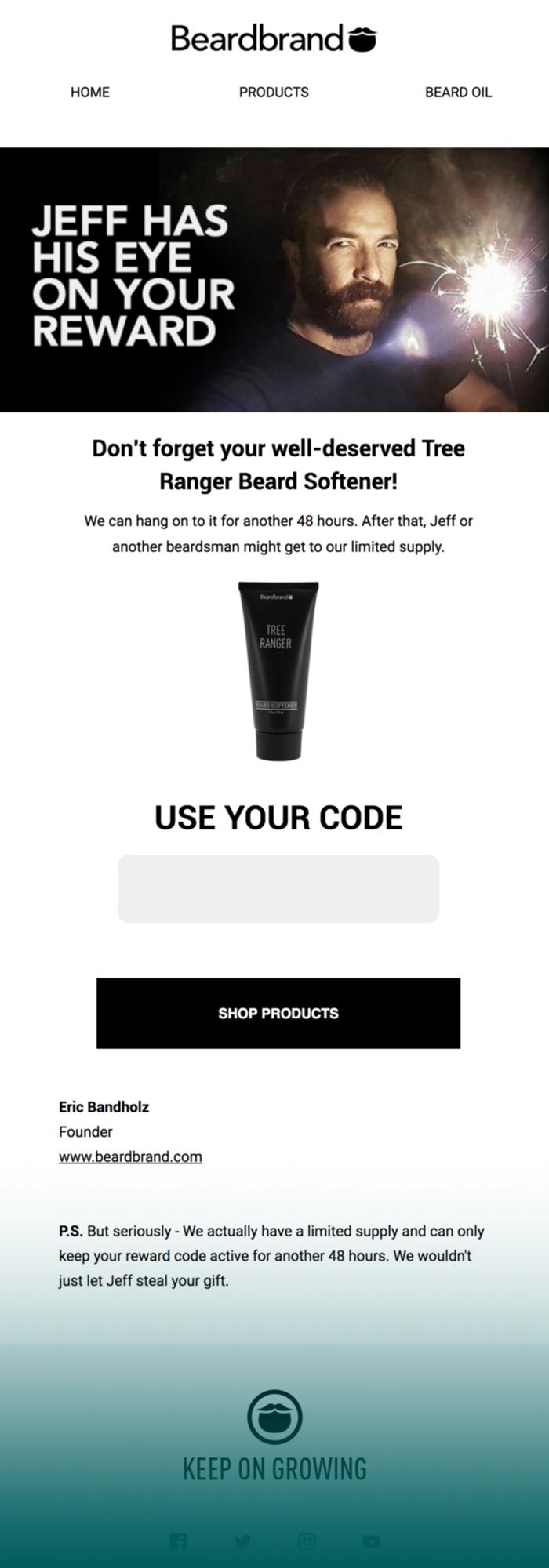
These are the people who have purchased from you at least once over all-time. Those who’re most likely to buy are the people who have bought from you already.
As long as your post-purchase experience is high quality, you can rely on this segment to give you meaningful feedback on any product drop or discount.
Their actions will tell you if your emails are effective, especially if you have a reasonably low AOV. If you do something they like, they’re extremely likely to convert.
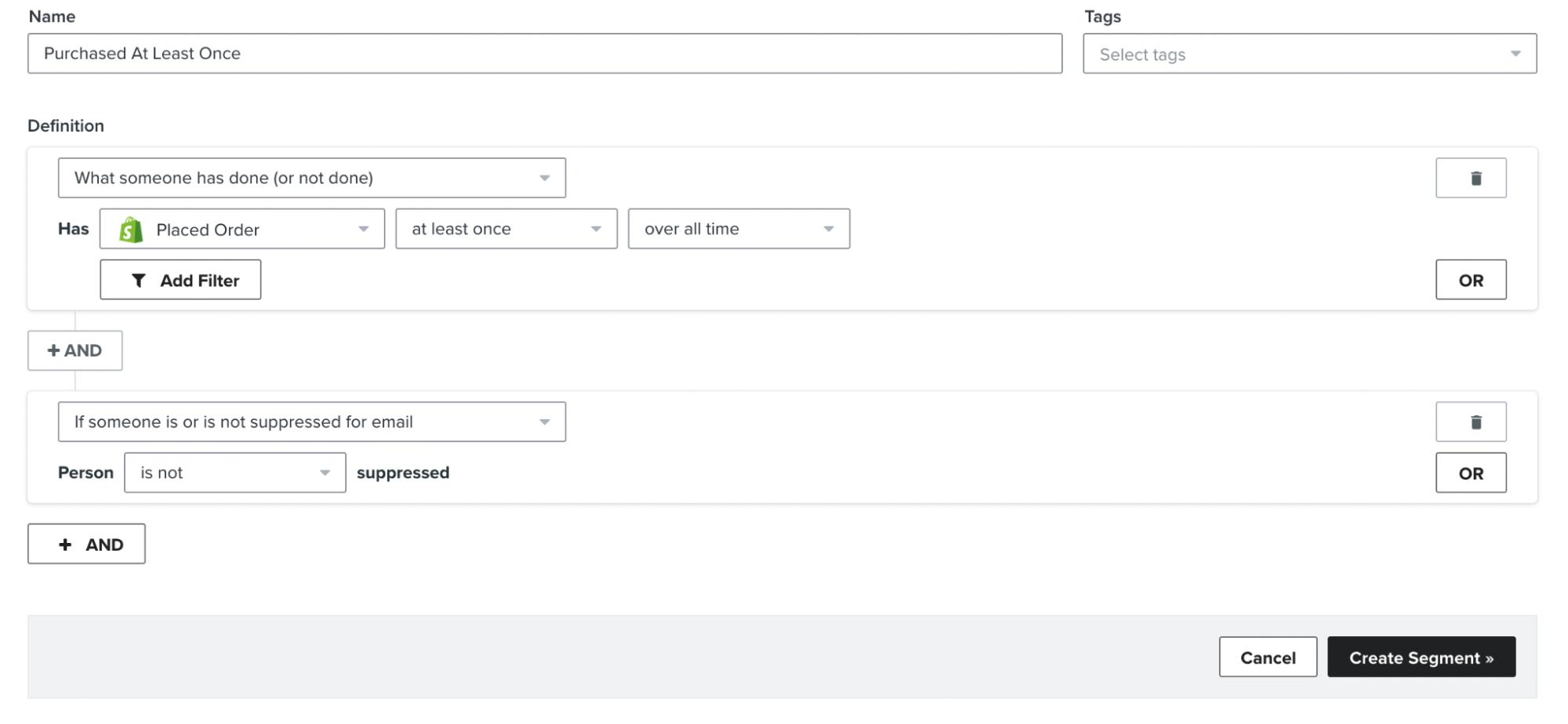

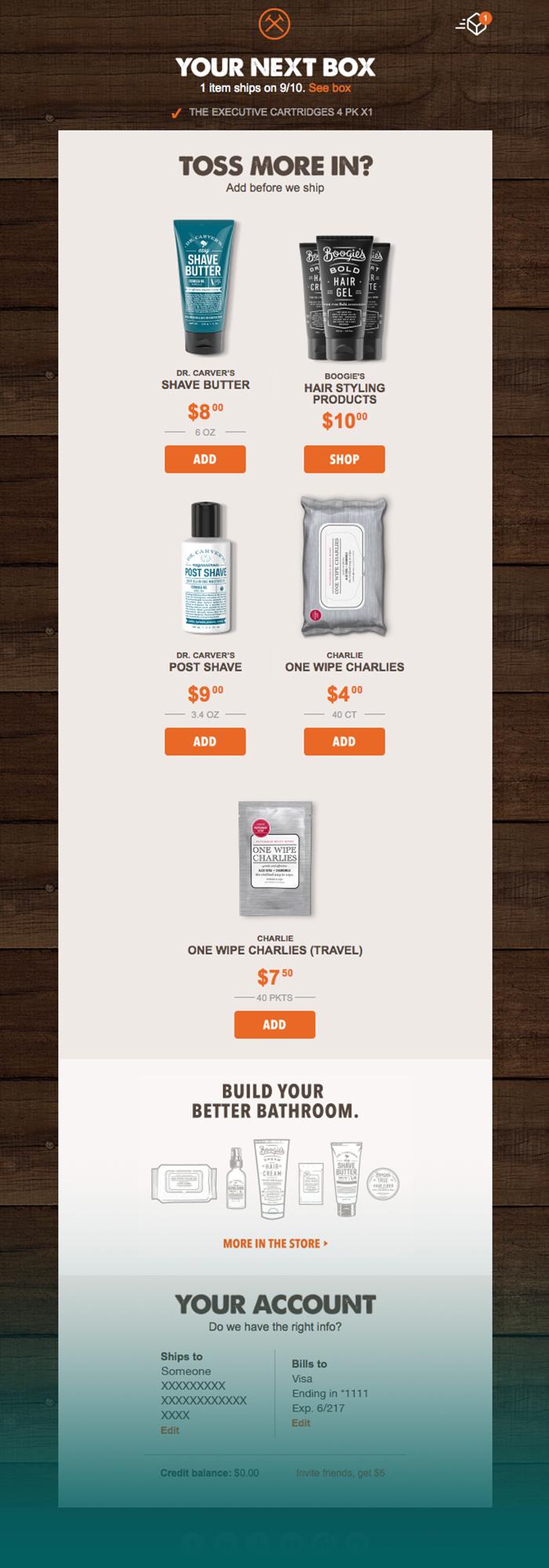

These are the people who have opened an email at least once in the last 120 days. This is best used for big events or discounts to reach as many people as possible.
Best thought of as your ‘casual fans’ they’re not going to open or click on every email, but will likely engage when there’s a big announcement or a sale.
This list should be treated as 98% of the people who are interested in the brand and intend to buy again. If they haven’t engaged in over four months, they’ve likely churned.
Audiens monitors your segments for changes in buying behaviour


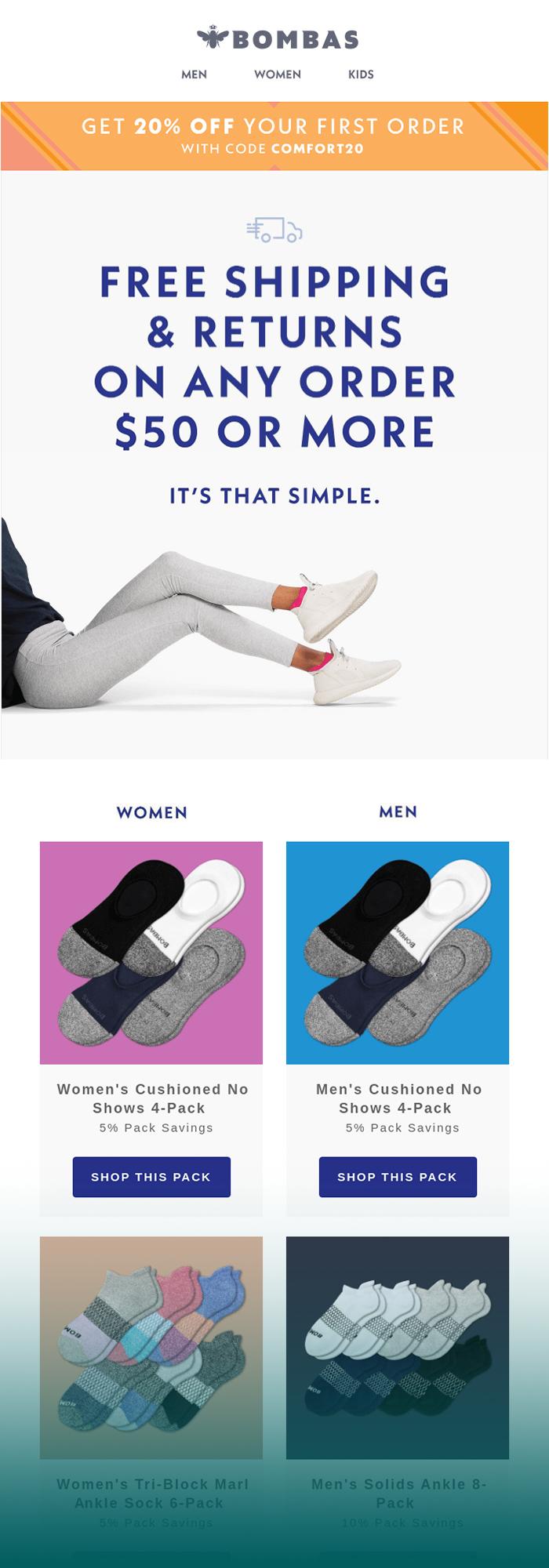


One way that works well is by using RFM analysis to really work out who the best customers are.
Adam Pearce CEO, Blend Klaviyo Master Partner
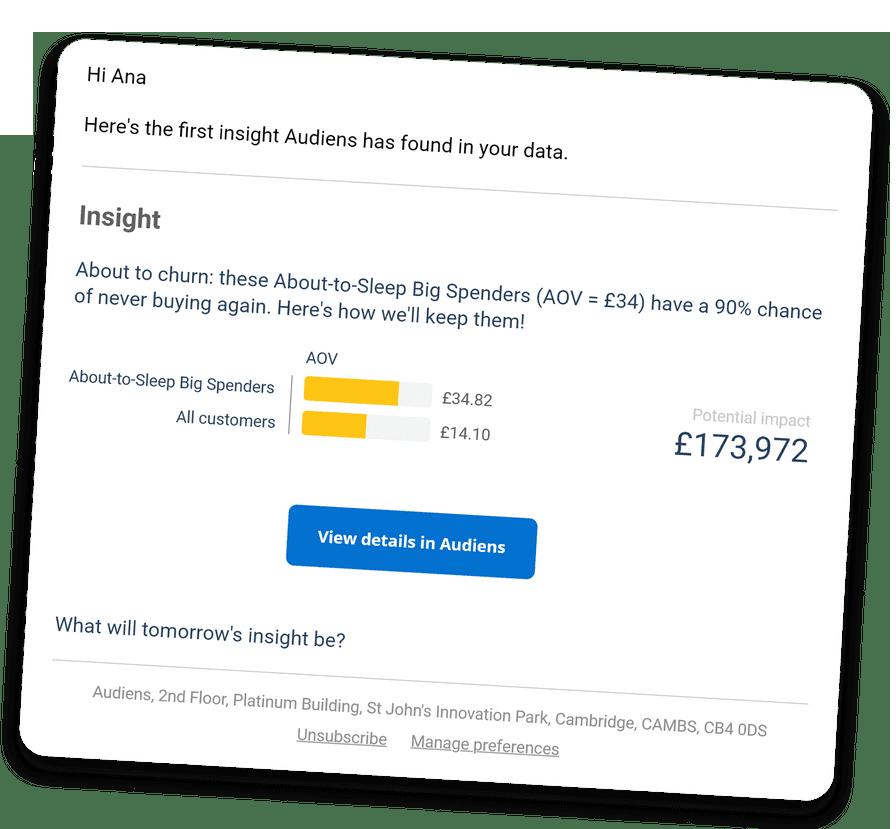
Configure email authentication.
Email providers use a set of technical protocols to check that incoming emails are from a legitimate (and safe!) sender before they’re delivered to the user's inbox. ��
The most important are DMARC, DKIM, and SPF.
If you can correctly configure all three elements, your emails are more likely to land in your customer’s inbox. ��
Take a look at Klaviyo’s article on email authentication for a deeper dive, and use MX ToolBox to check your existing settings.
This is a measure of how well your emails are received by customers. To gauge your send reputation look at your bounce rate, unsubscribe rate, and spam complaint rate. ��
You can keep track of these in Klaviyo by going to your Dashboards > Overview dashboard.
A high bounce rate (emails that can't be delivered) or unsubscribe rate will negatively impact your send reputation. ��
To improve send reputation, send marketing emails from a dedicated domain. ��
This is a domain that's only used for sending marketing emails, rather than a general-purpose email address like hello@mycompany.com.
You’ll often see companies using a domain like hello@email.mycompany.com instead. ��
Dedicated domains can differentiate your marketing emails from other types of emails (e.g. transactional) and make them more likely to be delivered to customers’ inboxes.
It’s important to warm up an email inbox before you use it to send any marketing emails. ��
This means gradually increasing the volume of emails you send from a new email address or domain over a period of time. ������������
If you suddenly start sending a high volume of emails from a new address, it can raise red flags with email providers and result in your emails being marked as spam or sent to the promotions tab in Gmail. ��
There are a number of standalone tools that can help warm up a new domain or inbox, such as Warmup Inbox, Mailwarm, and WarmBox.
Stay sensible with subject lines
There are certain words and characters that are more likely to trigger spam filters.
For example: "free", "discount", "sale", "buy now", "limited time" and "amazing". ��
It's okay to use these words in moderation, as long as they are relevant to your message and not being used in a deceptive way. �� Try running an A/B test using different subject lines if you're unsure. Never write a subject line in ALL CAPS or with excessive exclamation points!!!!
Plain text emails generally have a better deliverability rate compared to design-heavy HTML emails.
They feel genuine and stand out in a noisy inbox — particularly if sent on behalf of your brand's founder.
It's worth testing a few well-placed plain text emails in your flows.
Here’s an example from SmileDirectClub:

Okay - this one technically isn’t going to boost your email conversions.
But it’s a no-brainer! ��
You should leverage your email list to run granular, high-converting paid social campaigns by syncing your Klaviyo segments and lists as Custom Audiences in Facebook Ads Manager. These audiences are warm and you’re likely to see much higher conversion rates compared to your cold prospecting campaigns. ��
The folks at Klaviyo have created a useful article on precisely how to set this up, along with different strategies you could test.
For example, if you’re struggling to win-back your dormant customers, it might be that email isn’t the best channel to reach them. ��
By using a list of those customers as a Custom Audience, you stand a better chance of winning them back.
Use this strategy to highlight what’s unique about your products, and the service you offer. ��



A discount for first purchase often means a lower LTV, �� as the customer tends to be price sensitive.
Pearce CEO, Blend Klaviyo Master Partner
The major problem with discounts is that it can encourage the wrong type of customers. ��Adam
If you rely on discounts to drive sales, you've got a problem. ��
Here’s why:
- Customers get into the habit of waiting for a discount ��
- You’ll erode the perceived value of your product over time ��
- You’re probably giving discounts to customers who’d pay full price ��
- Discounts can play havoc with your retention and LTV ��
It’s a slippery slope (albeit a tempting one).
We’re not expecting you to stop offering discounts entirely.
It’s a huge lever for acquiring new customers.
Instead, think about using discounts for existing customers tactically…
Upsell customers who aren’t quite VIPs yet
Create a segment of customers with high AOV who fall just outside your “VIP customer” criteria.
Use discounts as an opportunity to upsell and get customers to try out your more expensive or higher-margin products.
It's a win-win situation - they get a good deal and you make more money.
Run flash sales sparingly
Got extra inventory that's taking up space?
Use discounts to move those products out the door and make some room for new lines with a very occasional flash sale.
Be sure to highlight that it’s a time-limited offer.
If you do this too often, you’ll quickly see diminishing returns.
Cashback (where the user receives a % of their order total back) has been used by major online retailers for years to drive sales, but it’s rarely seen in the Shopify space.
Check out Fondue if you’re interested in trialing this approach.
They claim that cashback can be "more profitable" and a "stronger purchase incentive" compared to discount codes.
Working out optimal send times is one of the biggest challenges we see brands facing, especially as global and national time zones have to be taken into consideration. ������
We recommend utilizing Klaviyo's Smart Send Time feature which learns the behaviors of your email recipients and tells you exactly when to send messages to maximize your open rates. ��
Georgie Carter Founder, Pepped Klaviyo Master Partner
If you want know the ideal time and day to send your emails (to maximize conversions), there’s three key areas you’ll need to experiment with:
Test different times of day ⌚
You could send an email to half of your list at 10am, the other half at 2pm, and compare the open and click-through rates for each group.
Test different days of the week ��
You could send an email to half of your list on Monday, the other half on Wednesday, and compare the results.
Test different time zones
You likely have customers located in different time zones.
Each time zone will have its own “best conversion time”.
For example, you could test send an email to customers in the Eastern time zone at 10am and to customers in the Pacific time zone at 7am.
Don’t have time for all that data analysis? Audiens’ app will analyze your historic customer behavior and figure this out for you.
The thing with post-purchase is that we need to think about the actual experience the customer has.
For example, the first time they try on the shirt ��, when they take the gift to the party �� or the taste of the chocolate for the first time. ��
If brands think about these 'moments' and speak directly to them, post-purchase can be much more effective.
Pearce CEO, Blend Adam
Adam
When your customer places an order, their journey hasn’t finished. ��
You’re probably sending them tracking updates, delivery confirmations, and hopefully a feedback survey. ��
The key element that 99% of brands forget?
Showing the customer how to actually use the product. Use your post-purchase flow to promote product guides, how-tos, and care tips. ��
These are simple ways to improve customer satisfaction and customer retention. ��
Happy customers are more likely to come back and place another order. ��
Here’s examples from DTC brands using their post-purchase email flow to make sure that customers get the most out of the product they’ve just bought...



Editor's note: Unless you have access to a data scientist, it's difficult to do the analysis we’ve detailed below. That's why we built Audiens (we do it for you).
Finding the optimal cross-sell product for each customer is a science. ��
Get it right and you could increase email revenue by 20%. ��
But how do you find the right products to cross-sell? ����
You could make an educated guess, but if you have more than a dozen SKUs it becomes less likely that you’ll guess correctly. ��
Here's three data mining techniques that top brands use to find their ideal cross-sell products...
This method looks for relationships between products frequently purchased together.
This method groups together products with similar characteristics, and can help you identify clusters of products that are likely to be popular with certain customer segments.
This method uses data from the past purchase history of your customers to recommend products that are most likely to be of interest.
As mentioned, this is advanced data analysis needing a working knowledge of SQL or Python. ��
✅ Audiens’ app does the analysis for you, based on your Shopify data.

With a well-planned abandonment flow in Klaviyo, you can drive 10% more orders.
But there’s three distinct customer behaviors you should target with abandonment emails.
Hint: most brands only use one of these.
Abandoned browse ��
��
Someone from your email list viewed a product page, but didn’t add anything to their cart.
Abandoned cart / basket ��
��
Someone from your email list has added items to the cart, but didn’t checkout.
Abandoned checkout ��
��
Someone has started the checkout process, but leaves before placing the order.
By default, Shopify only sends abandoned checkout data to Klaviyo, so you’ll need to add custom events on your other pages to create the other two flows.
Here’s a few examples of high-converting emails from top DTC brands...




Let’s put it into practice!
Now that you’ve got these 10 tactics under your belt, you should be able to calm that nagging feeling you should be doing more.
Now you know what to do! ��
Before making your to-do list, take a moment to check out the Audiens app.
We’ve built the app from the ground up to help you automate most of these tactics, from finding the best time of day and week to send your email campaign, to knowing which products will resonate best with each customer segment.
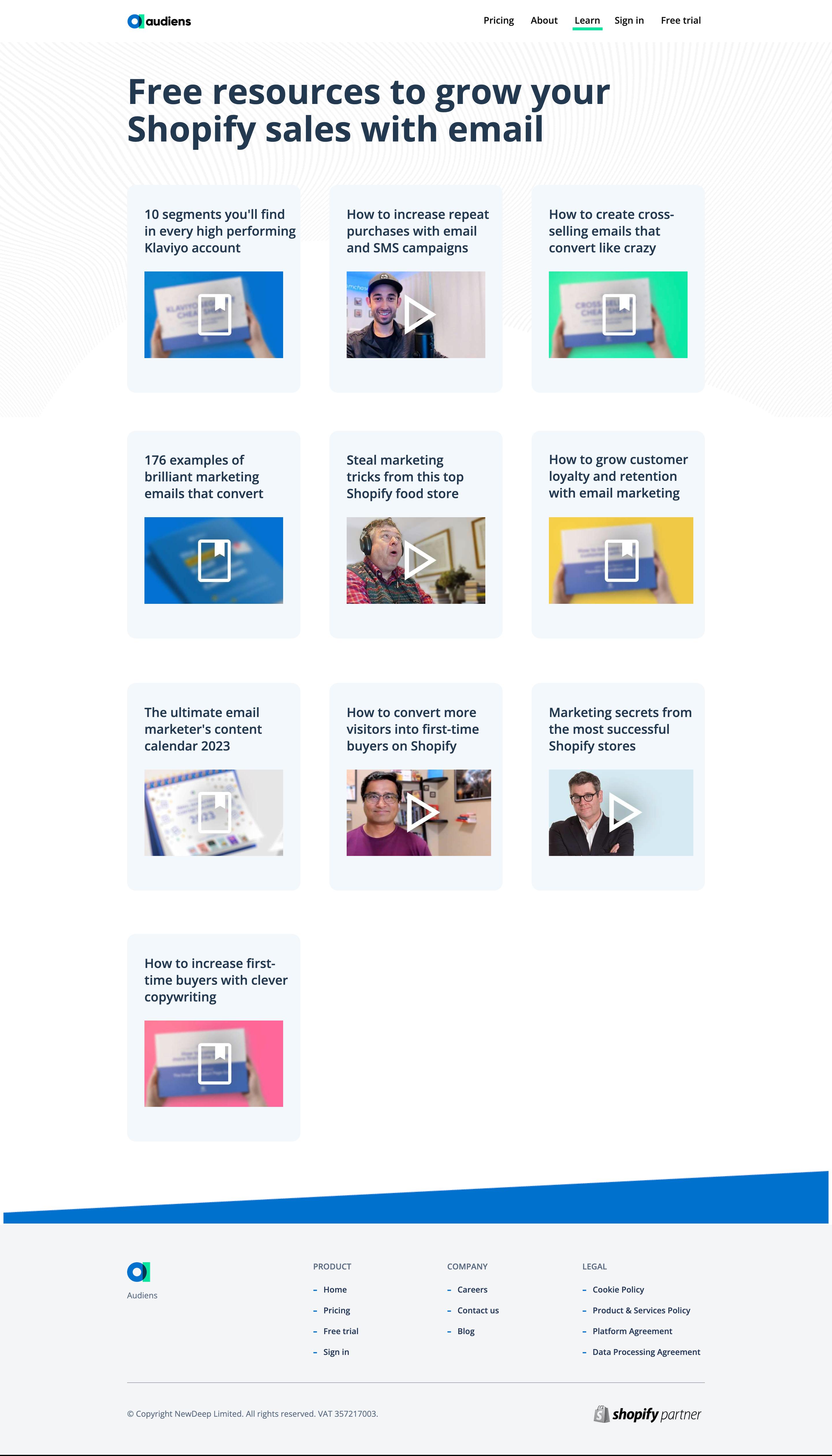

All that’s left to say is best of luck in your Klaviyo endeavors!
And if you found this guide useful, take a look at our Learn page for more content like this. ��



